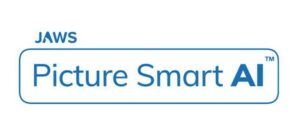Navigating the Workspace: Strategies for Creating a Visually Accessible Environment

In recognition of March Awareness Month and the important focus on Workplace Eye Wellness, our organization is committed to fostering environments where inclusivity and accessibility are at the forefront of design. A workplace that accommodates the diverse needs of its employees, including those with visual impairments, not only adheres to the principles of equal opportunity but also creates a culture of mutual respect and empowerment. It takes thoughtful workplace design and the incorporation of leading-edge assistive technologies to transform an ordinary office space into one that is fully accessible and enables individuals with visual disabilities to thrive.
At New England Low Vision and Blindness, we understand the significance of creating a visually accessible workplace. It’s not just about compliance; it’s about building a space where every employee has the opportunity to contribute their best work comfortably and efficiently. From the arrangement of physical spaces to the selection of adaptive tools, every detail counts towards making inclusivity a standard practice. By making workspaces more accessible, we are not only assisting individuals but are enhancing the collective productivity and creativity of teams.
Our approach emphasizes the importance of equipping work environments with the latest technology and resources to support those who are visually impaired. Throughout our years of service, we’ve witnessed firsthand how simple modifications and assistive devices can make a significant difference in the day-to-day professional lives of individuals. Commitment to accessibility in the workplace is a powerful statement—it tells employees with disabilities that their well-being and success are a priority and it allows them to participate fully in all aspects of work life.
Understanding Workplace Accessibility
In the spirit of March Awareness Month: Workplace Eye Wellness, it is crucial to recognize the significance of an accessible work environment. Our commitment is to facilitate life-changing resources and leading-edge technology for individuals with visual impairments, ensuring that every workplace is inclusive and compliant with the Americans with Disabilities Act (ADA).
Legal Framework and the ADA
The ADA is a civil rights law that prohibits discrimination against individuals with disabilities in all areas of public life, including jobs. It requires employers to provide reasonable accommodations for employees with disabilities, ensuring equal opportunity in the work environment. Compliance with the ADA means recognizing the importance of accessibility and adjusting the workplace to the needs of all employees, which is a legal and ethical imperative.
Benefits of an Accessible Workplace
Creating an inclusive and accessible workplace is not only a legal requirement but also offers substantial benefits for businesses. It widens the talent pool, increases employee retention rates, and enhances overall productivity. An accessible workplace fosters a culture of diversity and inclusivity, which can improve morale and lead to innovation and growth.
Common Accessibility Challenges
In terms of visual accessibility, common challenges include inadequate lighting, non-contrasting color schemes, and a lack of assistive technology. Addressing these issues often involves installing large monitors, providing screen reader software, and ensuring that all materials are available in a format that employees with visual impairments can utilize. Our mission to Bring Hope to people who are visually impaired includes overcoming such hurdles through advanced technologies and dedicated support.
Assistive Technologies and Tools
In the quest to foster visually accessible workplaces, we understand the importance of implementing assistive technologies and tools. These innovations are vital for creating an enabling environment that accommodates visually impaired employees and allows them to perform their tasks efficiently and independently.
Visual Aids and Screen Readers
Visual aids play a pivotal role in enhancing visibility for those with low vision. From magnification software to high-contrast keyboards, these tools help in amplifying text and images on screens and physical documents. Screen readers, on the other hand, are essential for individuals who find visual aids insufficient. By converting digital text into speech or Braille output, screen readers enable users to access information without strain.
Braille and Tactile Solutions
Braille technology has revolutionized access to written content for the visually impaired. Braille displays and notetakers allow for instant conversion of text to Braille, making written communication accessible. Beyond this, tactile solutions such as raised-line drawings and tactile graphics provide an additional layer of understanding through touch. We emphasize the use of Braille and tactile solutions to ensure that all employees have the opportunity to engage with workplace materials effectively.
Ergonomic and Adaptive Equipment
The ergonomics of a workspace are just as significant as the assistive devices used within it. Ergonomic solutions are designed to minimize strain and maximize comfort. We offer a range of adaptive equipment, from adjustable desks to specialized chairs, tailored to meet the unique needs of those with visual impairments. By combining leading-edge technologies with ergonomic enhancements, we create a workspace that promotes wellbeing and productivity for everyone.
Designing an Inclusive Workplace
In recognizing March as Workplace Eye Wellness Month, we emphasize the importance of creating environments that support those with visual impairments. By implementing principles of inclusive design, workplaces can become welcoming and accessible to all.
Spatial Layout and Navigation
The arrangement of space in an office is pivotal for facilitating easy navigation for people with vision impairments. By ensuring clear pathways and consistent spatial layouts, individuals can orient themselves and move confidently within the space. It’s imperative to maintain a minimum of 32 inches of clearance for accessible pathways and avoid sudden changes in floor level to prevent tripping hazards.
Signage and Visual Cues
Effective wayfinding depends on clear, high-contrast signage placed at strategic locations. Signs should incorporate large, sans-serif fonts and Braille for inclusivity. Color-coded paths or tactile guides on floors can offer additional visual and texture cues, aiding those with low vision in moving independently throughout the workplace.
Furniture and Workstations
The selection of furniture and placement of workstations should prioritize accessibility. Adjustable desks and ergonomic chairs cater to a diverse range of needs, while leading-edge technology such as screen magnification devices can integrate into workstations seamlessly, offering support for employees with visual impairments. Ensuring ample lighting and minimal glare on surfaces can also significantly improve accessibility for everyone.
By focusing on these key aspects, we take significant steps toward designing workplaces that truly embrace inclusivity. Through our expertise as the leading provider of assistive technology and training, we bring hope and functional independence to individuals with visual challenges, establishing work environments where everyone has the opportunity to thrive.
Creating an Inclusive Culture
In recognition of March Awareness Month focusing on Workplace Eye Wellness, we emphasize the importance of fostering an inclusive culture in the workspace. This culture not only embraces diversity and inclusion but also ensures that accommodations and education are provided to support employees with visual impairments.
Fostering Diversity and Inclusion
To foster diversity and inclusion, we recommend implementing policies that actively recruit individuals from varying backgrounds, abilities, and perspectives. It’s vital to create teams that reflect the rich tapestry of society to cultivate a workspace where every voice is valued and every individual can thrive.
- Recruitment: Employ strategies to attract a diverse pool of candidates.
- Policy: Establish clear anti-discrimination policies that underscore the value of diversity.
Training and Education
Continual education about visual impairments, and the use of leading-edge assistive technology is essential in creating an inclusive workplace. We advocate for comprehensive training sessions that educate all staff about the various ways to make workplaces accessible and the importance of doing so.
- Awareness Training: Conduct regular seminars to raise awareness about visual impairments.
- Assistive Technology Demonstrations: Showcase how our state-of-the-art technology can aid productivity.
Employee Support and Accommodations
It’s our collective responsibility to ensure that employees with visual impairments receive the necessary support to perform their duties effectively. Our human resources team is committed to providing personalized accommodations, facilitating access to assistive technologies, and implementing ergonomic workspace design to promote an environment where all employees can succeed.
- Personalized Assessment: Collaborate with employees to understand their specific needs.
- Technology Integration: Integrate assistive tools that support individual work processes.
By fostering a culture that values inclusive culture, diversity, and inclusion, and provides the necessary education and accommodations, we bring hope and empowerment to our colleagues with visual impairments. We are proud to contribute to creating workspaces that are accessible, allowing everyone to contribute to the best of their abilities.
Strategies for Recruitment and Retention
To support a diverse and inclusive workplace, we have outlined key strategies aimed at enhancing recruitment and employee retention, specifically tailored for individuals with visual impairments.
Accessible Hiring Processes
We prioritize an accessible application process, ensuring that all potential employees have equal opportunity to present their qualifications. This includes providing job postings in various accessible formats and utilizing assistive technologies that enable applicants to navigate online platforms with ease. Support during recruitment is crucial, and we align with the Job Accommodation Network’s guidelines to create a seamless experience for candidates who are visually impaired.
Career Advancement Opportunities
We believe that fostering career advancement opportunities for our employees plays a significant role in retention. Providing access to professional development and leading-edge training, we ensure our workforce is equipped to thrive. By investing in employees’ growth and recognizing their contributions, we encourage long-term employment and reduce turnover.
Remote Work and Flexible Scheduling
Recognizing the significance of work-life balance, we offer remote work and flexible scheduling options. These accommodations not only assist in employee retention but also appeal to top talent during recruitment. Embracing flexibility allows our staff to tailor their work environment to their needs, promoting productivity and satisfaction.
Our commitment as a leading provider of assistive technology is evident not only in the services we offer but also in the inclusive work environment we cultivate. During Workplace Eye Wellness Month, we emphasize the importance of these strategies in supporting our mission while bringing hope to the visually impaired community.






